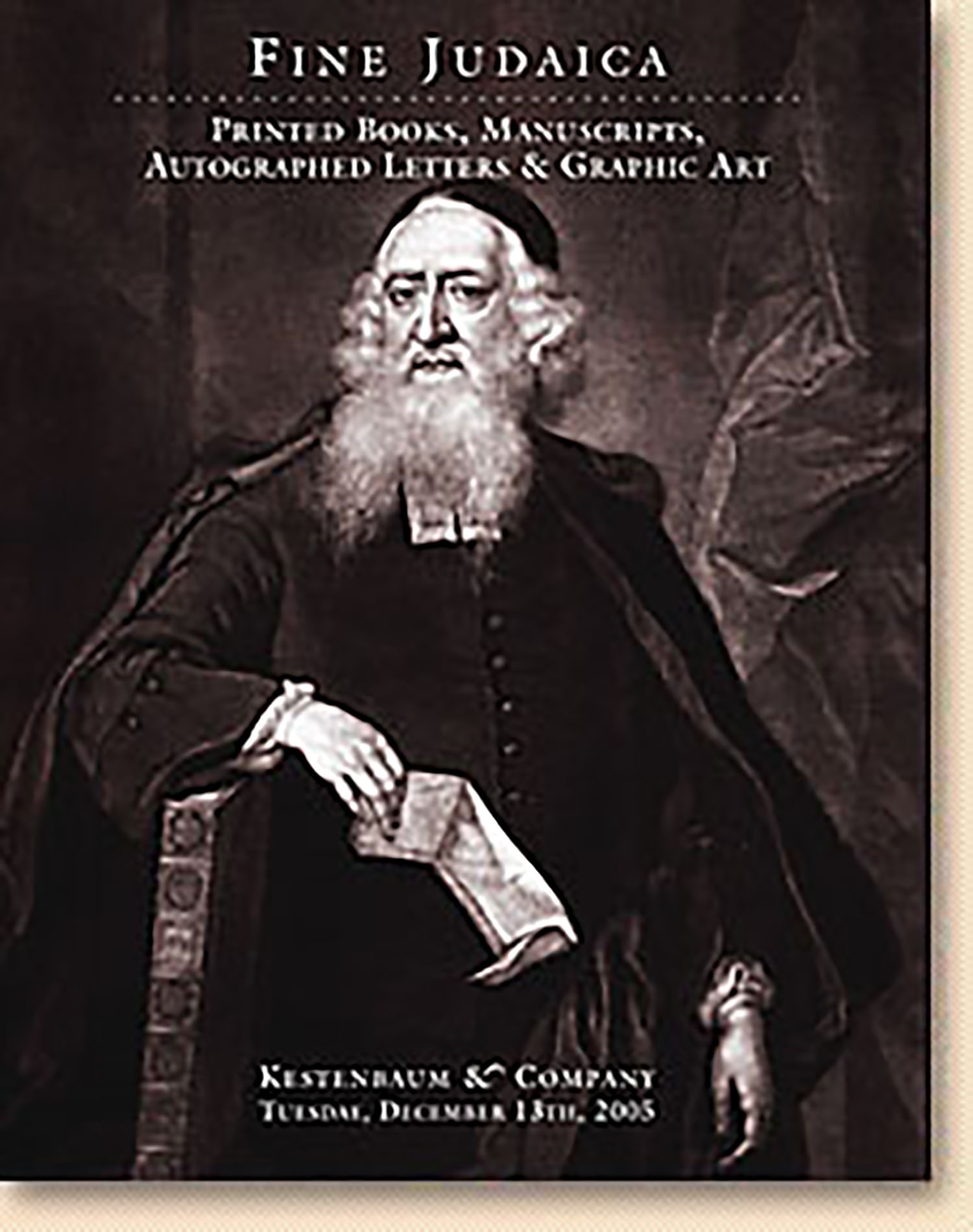(Isaac Leeser). Second Annual Examination of the Sunday School for Religious Instruction of Israelites in Philadelphia, Held at the Synagogue Mikveh Israel...Together with a Prayer by Isaac Leeser and an Address by Moses N. Nathan

AUCTION 31 |
Tuesday, December 13th,
2005 at 1:00
Fine Judaica: Hebrew and Other Printed Books
Lot 17
(AMERICAN JUDAICA)
(Isaac Leeser). Second Annual Examination of the Sunday School for Religious Instruction of Israelites in Philadelphia, Held at the Synagogue Mikveh Israel...Together with a Prayer by Isaac Leeser and an Address by Moses N. Nathan
Philadelphia: A. Waldie 1840
Est: $1,500 - $2,000
PRICE REALIZED $2,400
The address by Moses Nathan on the need for the Sunday school was found among the papers of Miss Slowey Hays of Richmond. Following the school’s request that Nathan furnish his sermon for publication he responded: “I have hitherto objected to the publication of my discourses; (however) the interest which the Sunday School has excited overcomes my scruples.” This is Nathan’s first published sermon. See J. R. Marcus, The Jews of the United States, 1:391-2.
Moses N. Nathan, a British expatriate, established a reputation as a staunchly traditional rabbi in Kingston, Jamaica, where he published the first Jewish periodical in the Caribbean. He also served as a rabbi in St. Thomas and the Virgin Islands. His visit to Philadelphia in 1840 may have been part of an effort to succeed Isaac Leeser as the rabbi of Mikveh Israel (see Marcus, Vol. I: p. 392); Leeser was then engaged in a struggle with the synagogue’s officers. In 1849 Nathan began a brief and difficult tenure as a rabbi in New Orleans. See Korn, Early Jews of New Orleans, 251-3.
Slowey Hays (d. 1836) was born in Boston and was later a member of Richmond’s Cong. Beth Shalome. At her death, her estate of $120,000 “was the largest estate yet left by a woman.” See Ezekiel and Lichtenstein, The History of the Jews of Richmond from 1769 to 1916, pp. 57, 92, 242
